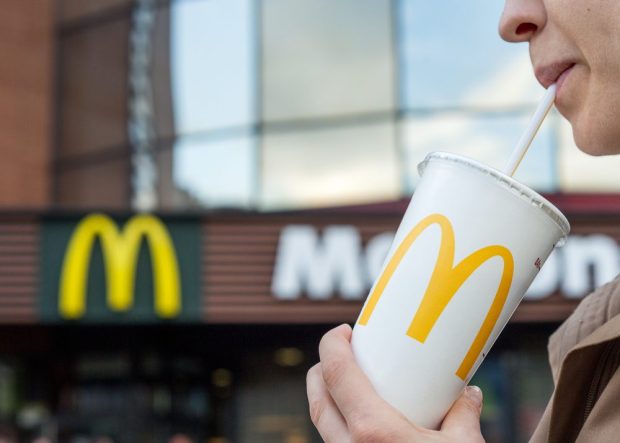McDonald’s Sees Diners Choose QSRs as Price Sensitivity Rises

As consumers increasingly strain under restaurant inflation, they choose lower-priced fast food options, McDonald’s noted.
On a call with analysts Tuesday (April 25) discussing the company’s first quarter 2023 financial results, the quick-service restaurant (QSR) giant noted that rising restaurant inflation and consumers’ increasing price sensitivity had shifted diners’ preferences away from higher-cost brands towards value-centric chains.
“When we get into these moments where consumer disposable incomes [are] under more pressure, and they’re having to think about moving to more affordable options, I think we are certainly a beneficiary of that, just because of our positioning on value and affordability,” the brand’s chief financial officer Ian Borden told analysts on a call.
Indeed, consumers are noting more price increases at QSRs than other restaurants, according to supplemental research from the December edition of PYMNTS’ Restaurant Digital Divide study, The 2022 Restaurant Digital Divide: Restaurant Customers React To Rising Costs, Declining Service. The November survey of more than 2,300 consumers who regularly purchase food from restaurants found that 70% of diners have been seeing price increases at full-service restaurants, and only 62% said the same of QSRs.
Moreover, findings included in the report note that many diners have been increasingly opting for lower-priced restaurants in this inflationary period. Twenty-two percent of those with an annual income of less than $50K, 15% of those earning between $50K and $100K, and 11% making more than $100K per year have made this shift.
Since the time of the study, those shares have likely increased. McDonald’s CEO Chris Kempczinski shared on the call that the brand has seen “resistance to pricing” in certain areas, more so than the restaurant chain “saw at the outset.”
This increase in resistance makes sense, given that restaurant inflation is becoming more pronounced relative to other food options. The latest data on record from the U.S. Bureau of Labor Statistics (BLS) Consumer Price Index for All Urban Consumers (CPI-U) showed the first time in this inflationary period that restaurant inflation exceeded grocery, 8.8% and 8.5% year over year respectively.
Discussing this reversal, Borden noted, “We feel good about how we’re generally positioned from a choice perspective for consumers, even as those dynamics shift back.”
As consumers increasingly feel this restaurant inflation and more of that pricing resistance shows up in their behavior, the effects can be seen both in what consumers purchase and how they purchase. Borden noted “a slight decrease in units per transaction,” with fewer add-ons.
Additionally, it appears inflation may be affecting the brand’s customers’ channel preferences. Kempczinski noted that delivery growth “has certainly slowed,” though he cautioned that it is unclear whether this deceleration is a function of the already high adoption of the channel or of the “consumer pressures” affecting their spending habits.
Indeed, research from PYMNTS’ study “Connected Dining: Rising Costs Push Consumers Toward Pickup,” for which we surveyed more than 2,100 U.S. consumers in January, found that nearly half of all consumers (48%) have been more likely to pick their restaurant orders up themselves rather than have them delivered, due to inflation.

